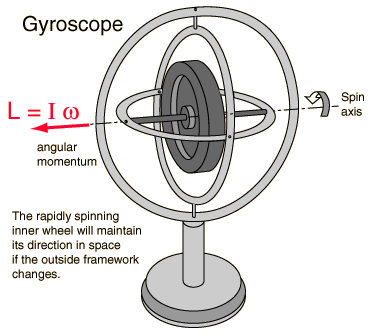



Gyroscopes are designed to measure angular rate or orientation about a given directional vector. They usually take the form of a disc-shaped object or rotor which is suspended in light supporting rings called gimbals. The gimbals have nearly-frictionless bearings which isolate the central disc from outside torque.
When the gyroscope is spun on its axis at high speeds it resists movements in certain directions and demonstrates extraordinary stability of balance as seen in the video below. Traditional gyroscopes work on the basis that a spinning object that is tilted perpendicularly to the direction of the spin will have a precession. The precession keeps the device oriented in a vertical direction so the angle relative to the reference surface can be measured. Multi-axis gyros provide measurements in two or three orthogonal directions.

Gyroscopes are used in many applications including learning environments, modes of transportation, and robotics. In learning environments they are often used as a way to demonstrate how a gyroscope can continually point in one direction. In various cars, bikes, and ships engines mimic the behavior of a gyroscope. In racing cars the gyroscopic forces from the engine help keep the car on the track. They make motorbikes easier to balance when moving and gyroscopes are used to staiblize ships.
The animation below shows a gyroscope precessing round a tower (shown in red). The gyroscope is shown in grey with the frame/cage/bearings in yellow.